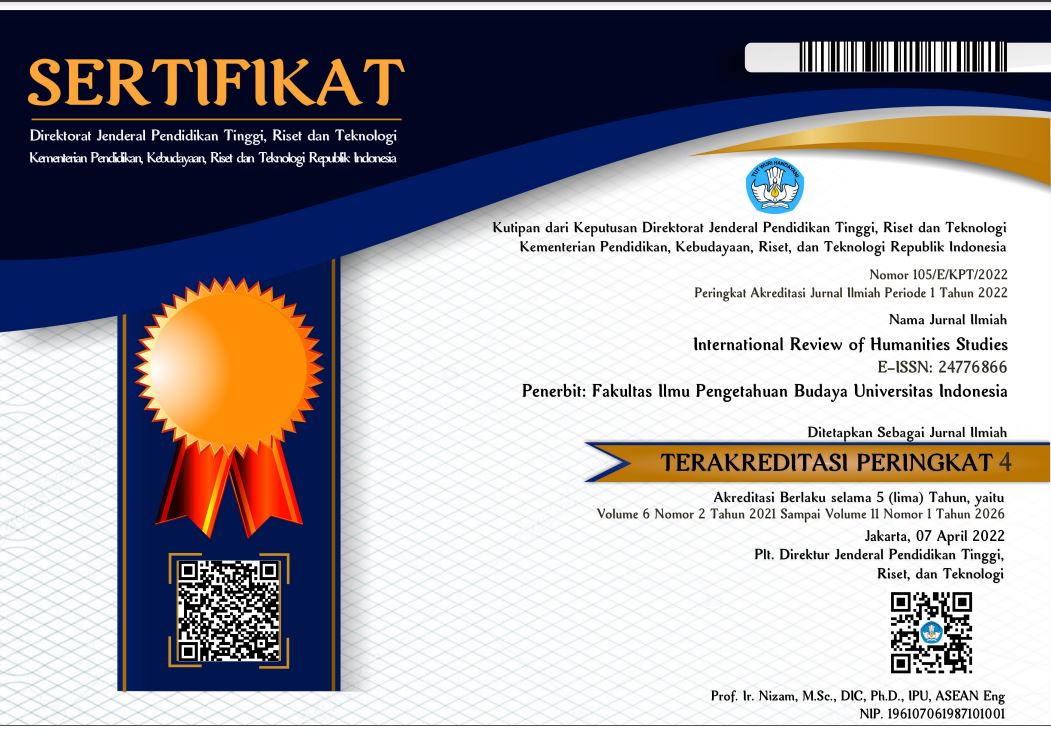International Review of Humanities Studies

Abstract
The Yogyakarta Palace is one of the Islamic sultanates that still exists in Indonesia. Even though the Yogyakarta Palace has an Islamic style and has been influenced by modernization which has penetrated aspects of state and society, the embodiment of the God-King concept from ancient Hindu eras remains embedded in the power of the king, state life, and the obedience of the surrounding community to the palace system. This paper has a problem regarding how to apply the concept of politics and power in the Yogyakarta Palace. A historical approach is used to reveal the meaning of the palace in the concept of kingly power and government as well as the cosmic role of the king in the state administration system at the Yogyakarta Palace. The research results show that the sultan as a government leader is also a spiritual leader, which is then depicted in a capital city that is a magical center that signifies harmony between the creator, government/spiritual leaders, and society.
References
Amin, Darori. 2000. “Islam Dan Kebudayaan Jawa.” Yogyakarta: Gama Media 83.
Assilmi, Ghilman, and James Farlow Mendrofa. 2018. “Ancient Tombs and Mosques in Java: Collective Memory and Cosmology.” Special Issue, International Review of Humanities Studies 3 (2): 336–48.
Endraswara, D R Suwardi. 2018. Falsafah Hidup Jawa. Media Pressindo.
Geldern, Robert Heine. 1972. “Konsepsi Tentang Negara Dan Kedudukan Raja Di Asia Tenggara, Terjemahan Deliar Noer.” CV Rajawali, Jakarta.
Gottschalk, Louis. 1986. “Mengerti Sejarah, Terj.” Nugroho Notosusanto. Jakarta: Universitas Indonesia.
Hadiatmaja, Sarjana, and Kuswa Endah. 2009. Pranata Sosial Dalam Masyarakat Jawa. Grafika Indah.
Heine-Geldern, Robert. 1982. Konsepsi Tentang Negara & Kedudukan Raja Di Asia Tenggara. Rajawali Press.
Ismaun, H. 2005. “Pengantar Belajar Sejarah Sebagai Ilmu Dan Wahana Pendidikan.” Bandung: Historia Utama Press.
Marwoto, Irmawati. 2007. “Boundedness Dan Polusi Pada Situs Islam Cirebon Abad XVI—XVIII.” Wacana 9 (2): 238–46.
Marwoto-Johan, Irmawati. 2005. “Ritual Heirlooms in the Islamic Kingdoms of Indonesia.” Crescent Moon: Islamic Art and Civilisation in Southeast Asia, 144–55.
Maulana, Irfan, and Ghilman Assilmi. 2023. “The Representation of Wetu Telu’s Islamic Identity in Ancient Mosques in Lombok.” In Fourth Asia-Pacific Research in Social Sciences and Humanities, Arts and Humanities Stream (AHS-APRISH 2019), 590–603. Atlantis Press.
Nasution, Isman Pratama. 2017. “The Royal Mosques in Indonesia from 16th to Early 20th Centuries As a Power Representation.” International Journal of Heritage Architecture 1 (3): 494–502.
Poesponegoro, Marwati Djoened, and Nugroho Notosusanto. 1990. “Sejarah Nasional Indonesia IV, Edisi Ke-6.” Jakarta: Balai Pustaka.
Sjamsuddin, Helius. 2007. “Metodologi Sejarah Ombak.” Yogyakarta.
Woodward, Mark R. 2004. Islam Jawa; Kesalehan Normatif Versus Kebatinan. LKIS Pelangi Aksara.
Recommended Citation
Assilmi, Ghilman
(2024)
"THE CONCEPT OF THE DEVARĀJA IN LEADERSHIP AT THE ROYAL PALACE OF YOGYAKARTA,"
International Review of Humanities Studies: Vol. 9:
No.
1, Article 18.
DOI: 10.7454/irhs.v9i1.1285
Available at:
https://scholarhub.ui.ac.id/irhs/vol9/iss1/18
Included in
Anthropology Commons, Art and Design Commons, Creative Writing Commons, Cultural Heritage Law Commons, Education Law Commons, Film and Media Studies Commons, History Commons, Intellectual Property Law Commons, International and Area Studies Commons, Legal Writing and Research Commons, Linguistics Commons, Museum Studies Commons, Philosophy Commons, Urban Studies and Planning Commons



